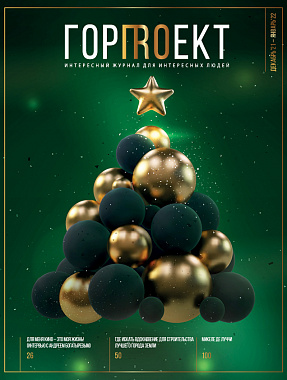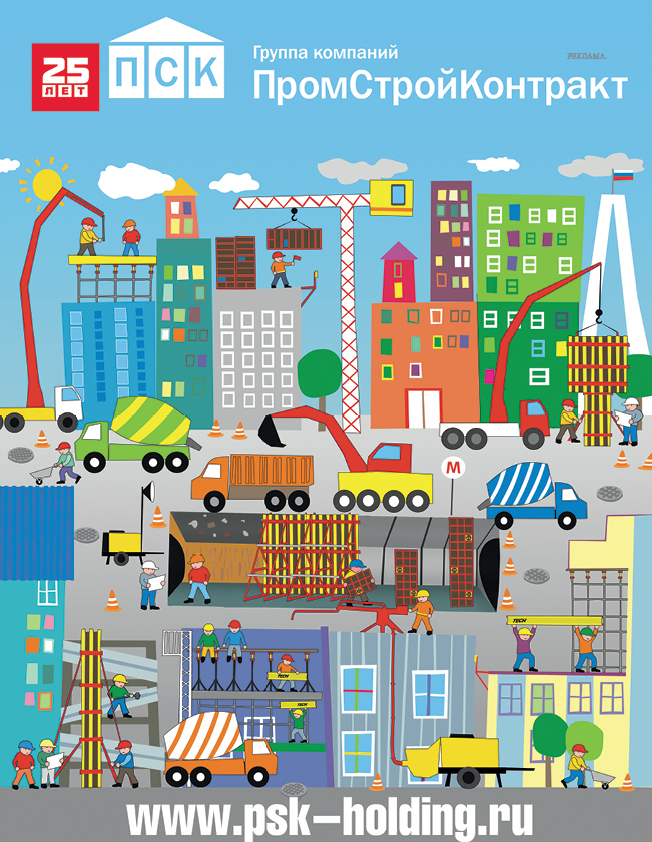The construction industry has resisted long-term exits longer than others. At the end of March, for example, Glavstroy, Ingrad, Inteko and other construction companies announced the continuation of work. But the tightening of the quarantine regime in the regions knocked down this pillar of the Russian economy. By mid-April, most non-state construction projects in the capital had stopped. Only under the ground continued to rustle the subway builders. Almost every region of Russia has its own "superfast" infectious diseases hospital. Roads were being built (almost 5,000 km, of which almost 800 were to hospitals and polyclinics), like many other things, but by the standards of the industry, construction and installation work in the country almost stopped. As a result, such giants as Donstroy and Ant Yapı announced a complete stop of facilities for several weeks. In the Moscow region alone, almost 400 companies have stopped building about 25 million square meters of housing. “Nature has become so pure” that Sergei Polonsky (ex-MIRAX) has returned to Russian development, who is already discussing a “business oasis” in Krylatskoye with Sergei Choban, and for the first time in many years the mayor's office decided not to re-tile. Although, as in the case of other conversations in the wake of the "coronavirus hype", the news of the construction industry was not without twitching. How serious is the impact of the epidemic on the backbone industry of the country was studied by the special correspondent of the Gorproekt magazine Maxim Kirsanov.
Painless Suspension Secrets
The construction industry was the last to go into quarantine and was among the first to emerge from it. Already on May 12, construction began in Moscow, and then within a month throughout Russia: from the Kuban to Vladivostok. Even in Belokamenka (Murmansk region), where more than 2,000 people were infected in the construction camp of the Center for the Construction of Large Offshore Structures, the situation was brought under control by the end of May, and almost 11,000 shift workers from 20 contractor organizations were saved thanks to effective quarantine. In big cities everything ended just as peacefully. Hunger riots of three million guest workers (according to independent estimates of Ferghana News Agency), which many experts feared, were avoided in conditions where the contractor could delay wages.
Not everyone, like Inteko, could boast that a significant lead time before the epidemic allowed them not to be afraid of “freezing” objects, but thanks to modern construction technologies, almost all hundreds of companies immediately took a high pace. “Modern formwork or an I-beam can be stored even outdoors for months under quite extreme conditions. A high-strength steel profile of the DELTA type with powder coating does not rust even in the unpredictable Russian climate,” says Roman Seleznev, director of the PSK Group of Companies. Almost all equipment on the construction site meets similar requirements: from a SANY crane to a Putzmeisrter concrete pump, from Atlas Copco compressors to Master guns, from Genie hoists to DYWIDAG nuts. All of them can lie or even stand like Promstroykontrakt stands for a long time on “frozen construction sites”, withstanding loads. The most fragile element on the construction site, as it turned out, is a person.
Marat Khusnullin, commenting on this, noted that one of the reasons why the construction of the metro continued despite the risks was not the 85th anniversary of the metropolitan "subway", but the fear of losing highly qualified teams that were given ambitious tasks. 105 kilometers of metro are being built in Moscow right now in order to increase the length of the metro by 20% by 2024, and the number of stations and electric depots by 49 new points. But these are large state projects, in private companies they are more accustomed to relying on high-quality management capable of accumulating resources where necessary. According to Donstroy, in the first weeks after the quarantine, they increased the number of builders by 20-50%, due to which they closed the gap and picked up the pace, which is extremely important in the face of economic uncertainty and Russian regulation.
“Today, 707 people work at the construction site. Just imagine, in one day our specialists manage to plaster almost 1000 square meters. m, to lay more than 230 meters of pipes for heating, to mount more than 80 meters of air ducts, ”they describe the hustle and bustle at one of the business class facilities in the company. Considering the dramatically increased safety requirements at the construction site (which now include “social distance”, mandatory masks, sanitizers and online planning), it is possible that right now we will see the Russian construction industry move to a new level of efficiency, where some specialists will quickly complete all paperwork. and computer operations, and at construction sites, mutual control will improve the quality and speed of typical operations. Optimization also helps with the regular activity of regulators: as Sergei Sobyanin said, 300 construction organizations in the first month of quarantine alone were fined for non-compliance with the requirements of Rospotrebnadzor.
Why construction is unstoppable
Of course, no one doubted that the construction sites would quickly “come to life”. Despite all the problems, the business remains equally socially significant and highly profitable. Moreover, if the first factor has received a natural development into a pandemic (there are now plans to build at least 47 new medical facilities in the capital alone!), The second phenomenon requires explanation. On the one hand, construction is part of the economy, and the latter is in crisis. The ruble is falling again, and the prices of materials are rising. Anton Yelistratov, a member of the board of directors of Samolet Group of Companies, predicts, under an optimistic scenario, a drop in apartment sales by 30% compared to last year. On the other hand, the cost per square meter, especially in the capital region, according to experts, will not fall. State support at the highest level did its job - demand began to develop along a U-shaped curve and went up after May. It’s not a fact that Nikita Stasishin (acting minister of construction while the head of the department is being treated for coronavirus) is right when he says that 2020 is now the best time to buy an apartment, but tens of thousands of people have already taken advantage of the preferential mortgage at 6% guaranteed by the Central Bank . Branch preferential programs have become a separate area of support - while Sberbank traditionally helps with military mortgages, the DOM.RF state corporation (which has already received 50 billion rubles to support developers) offers the possibility of preferential loans for medical workers, of whom there are about 2 million people in the country and whose salaries are now under the close attention of the President himself. An expert on the mortgage company INGRAD believes that "mortgage" state support, except for health care, will most likely affect fundamental science, R&D and other "primary" industries that are unexpected for the market. And if until now there were only 9% of state employees among the buyers of INGRAD apartments (second place after PIK in terms of construction volumes), in the future the situation may change. And if something doesn’t work out for private developers (after all, even in the United States there is a 20% drop in the real estate market), then state projects will come to the rescue.
Last year, almost 80 million square meters of housing were commissioned, this year the Ministry of Construction hopes for 140 (so much is needed to fulfill the national project set by the President). The head of the renovation fund notes that their funding continues at a "leading pace." Right now, 2,000,000 square meters are being built in 100 houses in Moscow, where it is planned to eventually demolish almost 5,000 Khrushchevs with a population of 1 million people. True, only 700,000 square meters of the planned 6,800,000 square meters were commissioned in the first years of the program, but it seems that now no coronavirus can stop the accelerated conveyor belt of "social maids". The first results of standard high-rise construction inspire restrained optimism - materials, formwork and the quality of project execution are at the junction of economy and business class. It is quite possible that in the coming years they will become one of the main alternatives to commercial new buildings in the new Moscow and other outskirts of the endless capital, where everyone has rushed in recent years, hoping for albeit small, but savings in construction. There is an opinion that the limits of Moscow after a period of self-isolation will not at all deter those who want to get spacious and economical housing. Among the indirect signs is a sharp demand for suburban plots of land in the Moscow region and dozens of other regions, Avito Real Estate reports.
Whether the long-awaited “suburbia” of the American level will appear in Russia as a result of the “coronavirus shock”, only time will tell - and not so bright trends have subsided in our difficult latitudes. But what will definitely remain in Russian construction is regulatory reform. And Putin is to blame here, whose fiery speech about “snip-wheeze” has already shaken the foundations of the domestic construction industry.
Putin and coronavirus as construction reformers
It all started with the legendary Infectious Diseases Hospital in New Moscow, built in a month. This was followed by another 16 prefabricated buildings for patients with COVID-19, built by the forces of the Ministry of Defense. When, after the success of the head of the ministry, Sergei Shoigu (not by chance, a "civil engineer" by education), one of the governors announced the construction time of the hospital in 2-3 years according to all the rules, the president was indignant and called for a revision of "SNIP-khripy" and the destruction of the number " quasi-participants” in the construction market. Dmitry Anatolyevich Volkov, the Deputy Ministry of Construction who recently recovered from the coronavirus, while his boss, Vladimir Vladimirovich Yakushev, was still ill, put forward a program of cardinal regulatory reforms to criticize the head of state. At the first stage, the department promised to reduce by 30% the number of documents with mandatory requirements for designers and builders - from 10 to 7 thousand items, and at the second - to abandon another 4 thousand requirements. As it turned out, after the president was dragged out, in Russia the requirements for builders are developed by 7 federal authorities, and another 20 departments issue endless standardization documents.
Dmitry Volkov referred to the “quasi-participants” of the market the developers of special technical conditions for STU, whose services cost up to 3 million rubles and take up to 2 months of construction.
In total, from a year with a small average construction time of a typical hospital (or school) on the approved territory, 8-9 months are spent only on approval. A couple more months are spent on the tender procedure (which are proposed to be reduced in emergency situations) and 2 months remain for the construction itself. If the promises in the Ministry of Construction and Housing and Public Utilities do not remain at the level of statements (and this is possible, because the excellent reports of the department have already helped Russia enter the TOP-30 countries in terms of ease of construction in the World Bank rating), then the Russian construction industry is waiting for really new times. As in the case of the consequences of the “health optimization of the 2010s”, there would be no happiness, but the coronavirus helped. And although we are still far from the victory over the pandemic, we have something to hope for.

 DOWNLOAD
DOWNLOAD LOOK
LOOK
 Top Content of the Month
Top Content of the Month


